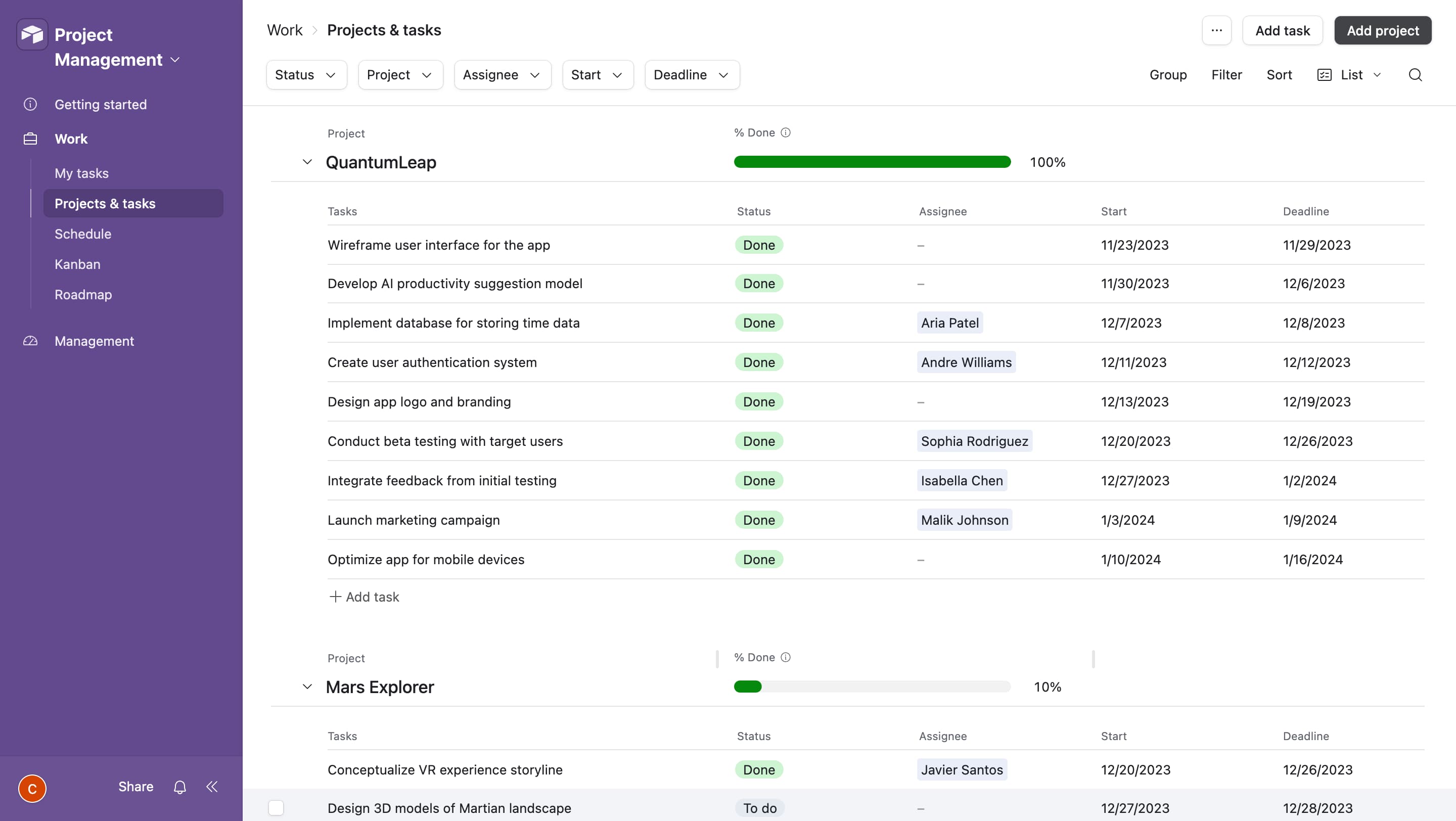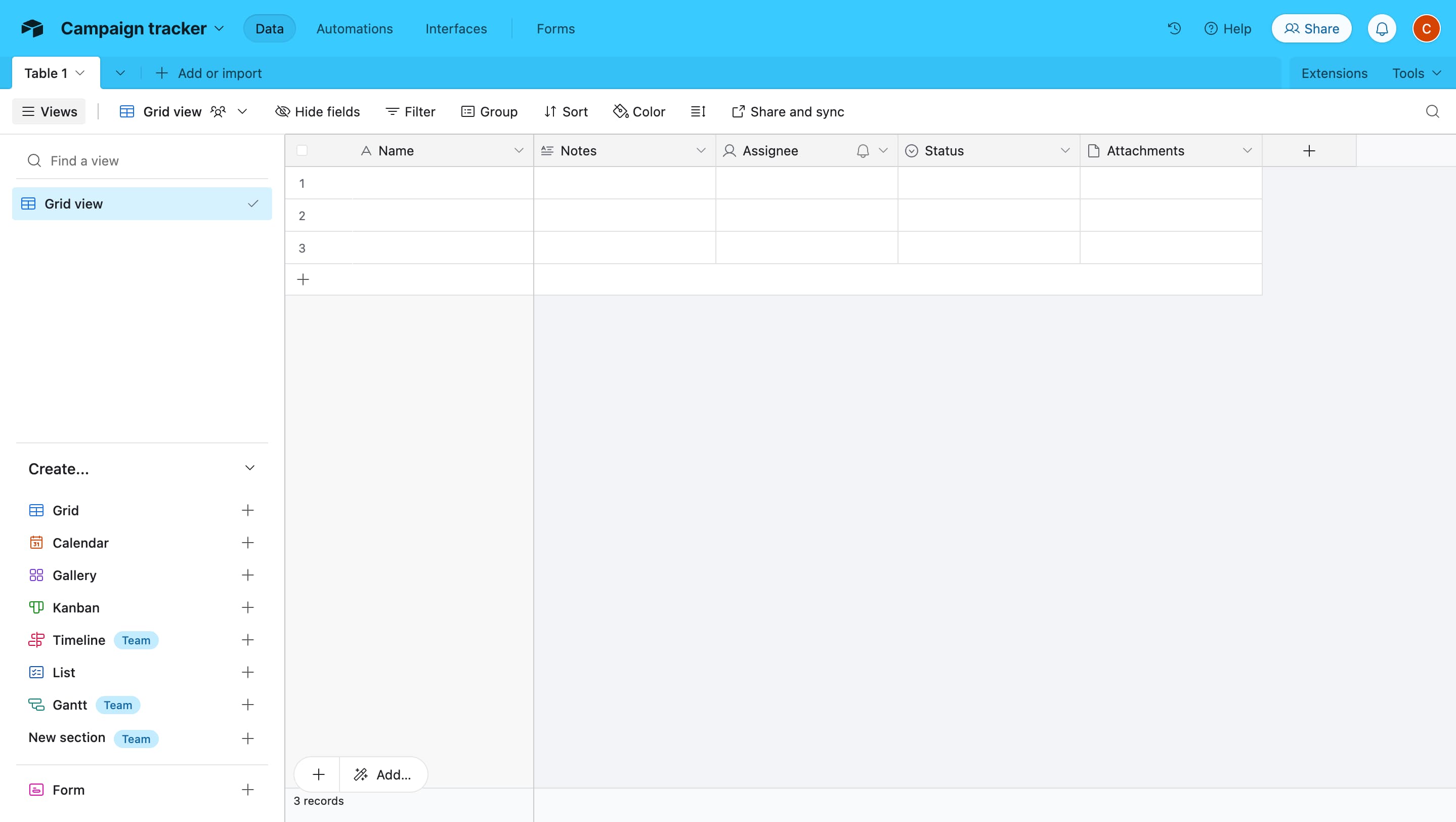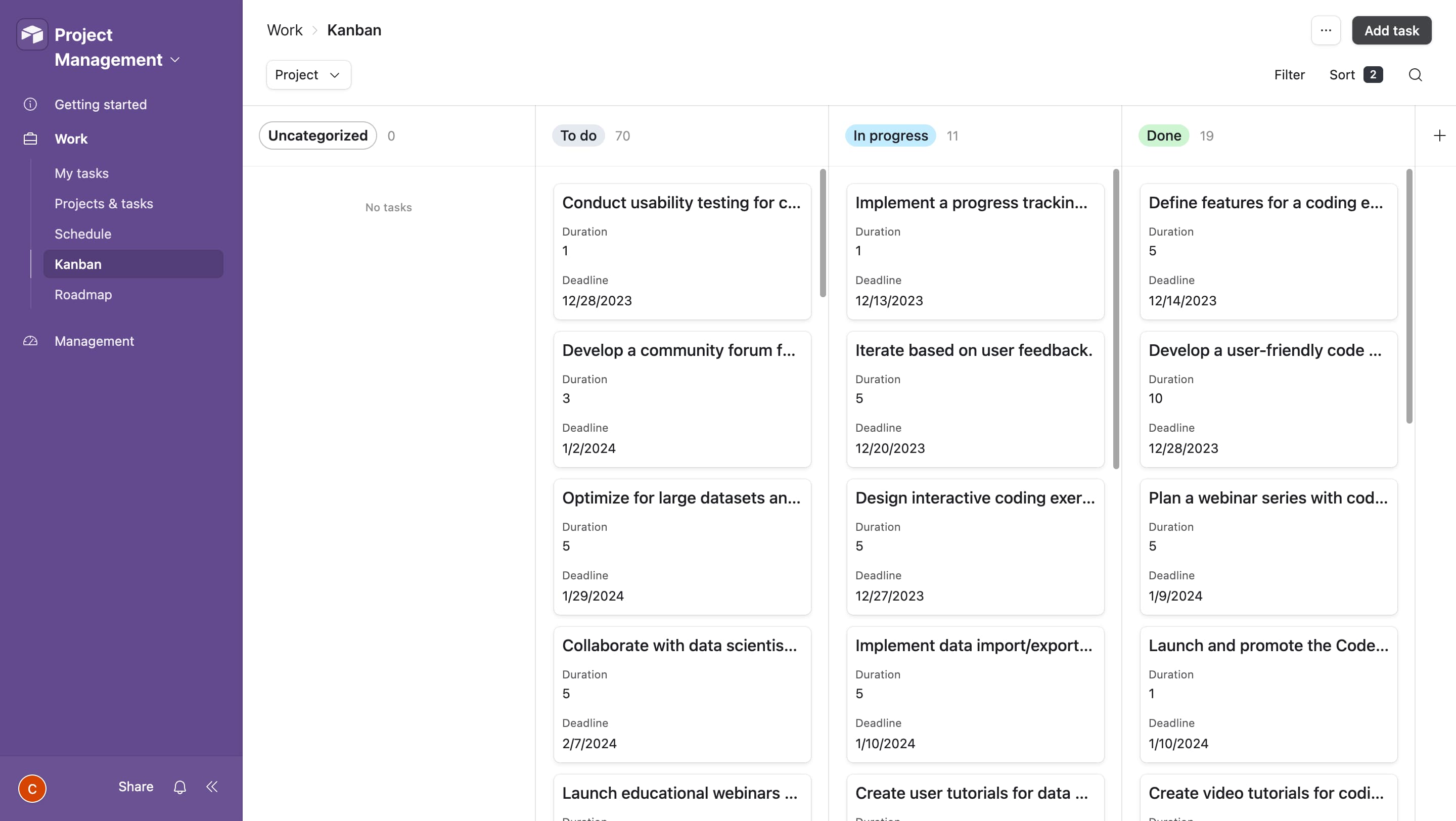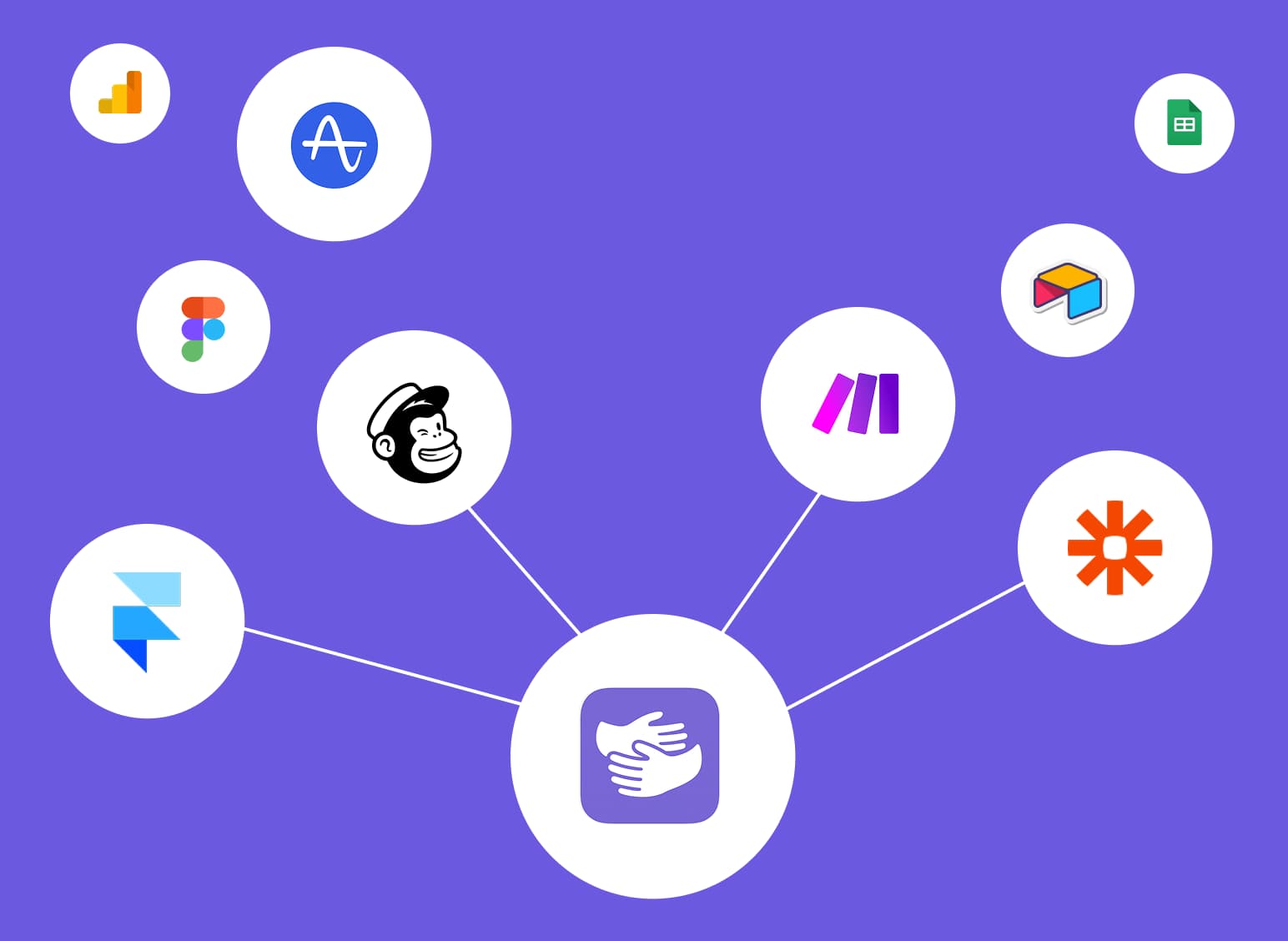What Is Airtable Used For? Key Features Explained

Stuck in Airtable?
AppHug gives you live guidance inside Airtable so you can do more, faster.
Try it for free↗Discover what Airtable is and explore how this powerful software helps teams organize, automate, and collaborate better.
TL;DR
Airtable is more than a spreadsheet — it’s a powerful tool for managing workflows, projects, and data. Learn what Airtable is used for and why teams love it.
By the way, we're AppHug. We built a free personal AI assistant that helps you navigate complex tools.
If you often get stuck or need to learn new tools, check out AppHug. It gives you real-time, step-by-step help based on your screen, saving you time and frustration.
Airtable is more than just a spreadsheet—it's a flexible platform that empowers users to organize information and automate workflows. Whether you're managing a project, tracking inventory, or building a content calendar, what Airtable is used for depends on your team's needs. This article breaks down its real-world use cases and explains why so many teams are switching from traditional tools.
What is Airtable Software Explained

Airtable is a modern work management tool that blends the flexibility of spreadsheets with the structure of a database. In the example above, Airtable is being used to manage a product development workflow — with tasks grouped under projects, assigned to teammates, and tracked by deadline and status.
Each project (like "QuantumLeap" or "Mars Explorer") contains a detailed list of tasks. Fields like Status, Assignee, Start, and Deadline make it easy to track progress. The visual progress bars and clean interface help teams instantly understand what’s done and what’s next.
What sets Airtable apart is this kind of customization with clarity. Whether you're managing tasks, building schedules, or tracking milestones, Airtable’s visual interface — with features like filters, views, and progress tracking — makes project data both powerful and accessible.
What Does Airtable Do That Spreadsheets Don’t?
If you're wondering what does Airtable do beyond what a typical spreadsheet offers, the answer lies in automation and integration.
- Linked Records: Connect data across tables, similar to relational databases.
- Views: Create filtered perspectives like Kanban, Calendar, Grid, or Gallery.
- Automations: Set triggers to send emails, update fields, or notify team members.
- Integrations: Connect with apps like Slack, Google Workspace, and Zapier.
Why Teams Love Using Airtable
From startups to enterprise teams, Airtable is loved for how it balances ease of use with powerful customization. Its clean, intuitive interface means even non-technical users can get started quickly — no coding or complex setup required.
But beneath the simplicity is serious depth:
- Customizable Workflows: Teams can tailor Airtable to fit their exact needs — from sales pipelines to editorial calendars.
- Collaboration-Friendly: Multiple team members can view, comment, and edit in real time, with field-level permission controls.
- Flexible Views: Whether you prefer kanban boards, grid views, or timelines, Airtable adapts to your preferred workflow style.
- Scalable Features: As your team grows, you can layer on automations, forms, syncs, and integrations without switching tools.
🧠 Real-world use: A design agency might start with a simple asset tracker, then evolve it into a full-fledged production calendar with approvals, deadlines, and client dashboards — all in Airtable.
This flexibility is what makes Airtable a long-term solution, not just a stopgap between spreadsheets and more complex platforms.
Need help in Airtable and all the tools you're using? Try using our personal AI assistant that gives you in-browser, step-by-step guidance so software finally makes sense.
What Is Airtable and How It Works
Let’s explore what Airtable is and how it works in different real-world contexts:
Marketing Teams
Build a campaign tracker that links assets to deadlines and tasks, viewable in calendar or gallery formats.

Product Management
Use Airtable for product roadmaps, prioritizing features with tags and status updates visible in a kanban board.

Agencies & Freelancers
Track clients, deliverables, and invoices in one customizable dashboard—no more switching between tools.
Taking It Further With Airtable
Once you’ve got the basics, Airtable's power multiplies. Explore templates, integrate it with your tech stack, and use automation to scale processes effortlessly. The more you explore, the more you’ll realize it’s built for growth.
Conclusion
Airtable isn't just another productivity app—it's a platform that adapts to the way you and your team work. If you've ever hit the limits of Google Sheets or Excel, it's time to explore what Airtable is used for in modern, flexible workflows.
Frequently Asked Questions
Is Airtable better than Excel?
Airtable is better than Excel for managing projects, linking data across tables, and team collaboration. While Excel is excellent for complex formulas and financial modeling, Airtable shines in no-code workflows and visual organization.
Can Airtable replace a CRM?
Yes, Airtable can serve as a lightweight CRM. It lets you track contacts, deals, and communication, with customizable pipelines, reminders, and automations — perfect for small to medium-sized teams.
Is Airtable free to use?
Airtable offers a free plan with generous features, including unlimited bases, rich field types, and up to 1,200 records per base. Paid plans unlock advanced features like syncing, automations, and more records.
What industries use Airtable?
Airtable is used across industries like marketing, design, tech, education, and non-profits. Teams use it for campaign tracking, editorial planning, product development, and internal databases.
Does Airtable integrate with other tools?
Yes. Airtable integrates with tools like Slack, Gmail, Google Calendar, Zapier, Notion, and more. You can automate tasks, sync data, and streamline your workflows across platforms.
How is Airtable different from a traditional database?
Unlike traditional databases, Airtable offers a visual, user-friendly interface with no need for coding. You can relate tables, build views, and set up automations without writing a single SQL query.
Stuck in Airtable?
AppHug gives you live guidance inside Airtable so you can do more, faster.
Try it for free↗